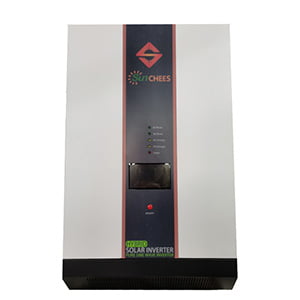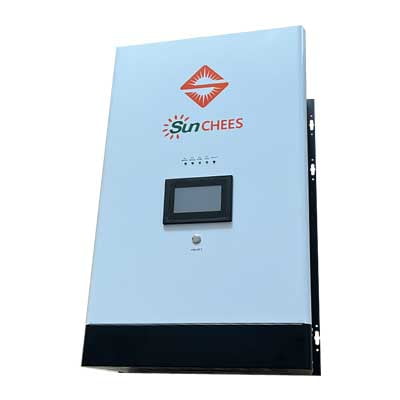Generator
A generator is a device that converts mechanical energy into electrical energy and is widely used in various industrial and civil occasions. The working principle of the generator is based on the principle of electromagnetic induction, that is, the rotating conductor cuts the magnetic lines of force in the magnetic field to generate current. There are many types of generators, mainly including:
- DC generator: outputs direct current, suitable for occasions requiring stable current, such as motor drive, charging, etc.
- AC generator: outputs alternating current, widely used in power systems, factories, shopping malls and other places.
The main advantages of the generator include high efficiency and stability, and its disadvantages are mainly large size and heavy weight, which are suitable for use in fixed places.
Inverter
An inverter is a device that converts direct current into alternating current. It is commonly used in solar power generation systems, energy storage equipment, electric vehicles and other fields. It relies on existing DC power supplies (such as gel batteries or lithium batteries, solar panels, and vehicle power supplies) and cannot generate electricity independently. The working principle of the inverter is to modulate DC pulses into AC waveforms through a switching circuit. The types of inverters are mainly divided into:
- Sine wave inverter: outputs high-quality sinusoidal AC, which is exactly the same as the mains power. It is suitable for equipment with high power requirements, such as home energy storage, farms, medical equipment, and schools.
- Square wave inverter: outputs simple square wave AC, which is suitable for equipment with low power requirements, such as power tools and lamps. Only pure resistive loads (such as incandescent lamps) are supported, which are basically eliminated and only seen in extremely low-cost scenarios.
- Modified sine wave inverter: The waveform is a step-like approximation to a sine wave, with low cost, suitable for ordinary resistive loads (such as light bulbs, electric heaters), suitable for low-budget off-grid systems, vehicle power supplies, simple tool power supplies, etc. Disadvantages: May damage inductive loads, cause noise, heat, etc.
The advantages of inverters are that they are small and light, suitable for mobile or temporary use. However, their prices are higher than generators, and their power output is usually lower than similar generators.
Generators are "autonomous power generation equipment" suitable for long-term, high-power power supply, but they rely on fuel.
Inverters are "power conversion equipment" that rely on batteries (gel batteries or lithium batteries) or solar energy and are suitable for clean, quiet and portable power.
The main differences between generators and inverters
| Generator | Inverter | |
| Working principle | Mechanical energy generates electrical energy | and direct current is converted into alternating current |
| Application scenarios | Factories, construction sites, etc., | Solar energy systems, wind power systems |
| Output type | Providing DC or AC | Specializing in converting DC into AC |
| Size and portability Bulky | Suitable for use in fixed locations Smaller and lighter | Suitable for portable use |
| Efficiency | High efficiency | High efficiency |
When choosing a generator or inverter, users should consider the following points:
1. Power requirements: First, you need to know how much power you need to provide and choose the right device.
2. Power type: Confirm whether the device requires DC or AC power, and then choose the right device.
3. Usage scenario: Consider the portability, size and weight of the device, and choose the device that is suitable for the specific use occasion.
4. Budget: According to your own financial situation, choose a generator or inverter reasonably to ensure the long-term use value of the equipment.
5. Efficiency and maintenance: Understand the efficiency of the equipment, choose equipment that is easy to maintain and use, and ensure the normal operation of the equipment.


